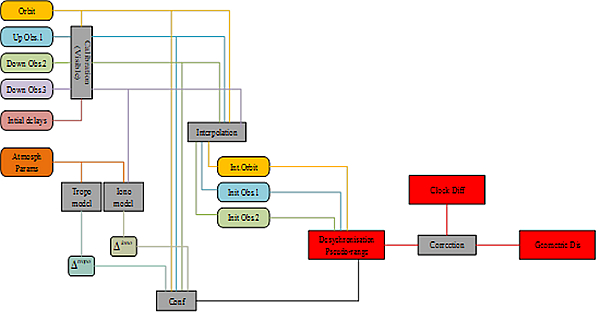The Time-Frequency Analysis and Research group from National Time Service Center (NTSC) of the Chinese Academy of Sciences (CAS) established a satellite-ground integrated time-frequency comparison simulation platform and achieved satellite-ground time synchronization accuracy better than 0.5 picoseconds.
The result published on Lecture Notes in Electrical Engineering and won the "Youth Outstanding Paper Award" at the 12th China Satellite Navigation Conference (CSNC) in 2021. The peer reviewers said“This time synchronization method is innovative, and it can provide help for long-distance high-performance clock comparison in the future. “
High-precision time and frequency transfer technology is widely used in basical physical testing, geophysical measurement and satellite navigation. Currently for the accuracy of long-range time transfer can only reach up 100ps, limiting the wide application of high-precision time–frequency reference in space science, said the leader of research group.
Researchers provided a precise time synchronization method that can be used to synchronize the time between a low-orbit spacecraft and a ground station. Correspondingly, various link error correction methods were given.
Based on a more comprehensive error system of satellite-ground links (GSLs), using the simulation data generated by the simulation platform, they verified the key correction method of delay error casued by high-speed relative motion between the low-orbit spacecraft and the ground station, and further realized ultrahigh precision satellite-ground time synchronization.
As an example of the application of these methods researchers used them to demonstrate that typical low-orbit spacecraft orbitography errors (attitude error of ~0.02o, phase center calibration error of ~2mm, POD error of ~10cm) affect the two-way time synchronization below its performance specifications (1 ps), and thus can reach the expected accuracy requirements on the science objectives that de-pend on that performance.

Fig 1. Satellite-ground time synchronization simulation platform (Three-frequency)(Image By NTSC)

Fig 2. Satellite-ground time synchronization accuracy in three-frequency mode(Image By NTSC)
CONTACT:
XIONG Tiantian
gjhz@ntsc.ac.cn
National Time Service Center, Chinese Academy of Sciences
 Print
Print